A Kapampangan pancit bihon recipe which is more tasty than an ordinary pancit bihon guisado. Kapampangan dishes is well known for being delicious and tasty than the other regional dishes in the Philippines.
Pancit Bihon Guisado Kapampangan: A Taste of Home
There’s something special about pancit bihon guisado, especially when it’s made the Kapampangan way. My Tita Remy, who grew up in Pampanga, always says that Kapampangans have a way of making dishes richer, tastier, and more comforting. Whenever she prepares this noodle dish, the entire house fills with an aroma that instantly brings back memories of family gatherings, birthdays, and fiestas in our hometown.
What Makes Kapampangan Pancit Bihon Special?
Kapampangan cuisine is known for being indulgent and full of flavor. Compared to the usual pancit bihon recipe, this version has a deeper, richer taste thanks to the addition of achuete extract and shrimp juice. These ingredients not only enhance the dish’s vibrant color but also infuse it with a slightly sweet and savory depth that makes it stand out.
My Lolo Ben, who used to run a small carinderia, swore by this technique. He always said that the secret to a good stir-fried bihon is layering flavors—starting with sautéing garlic and finishing with a sprinkle of fried garlic and green onions for that final burst of aroma and texture.
The Secret to a Flavorful Pancit Bihon Guisado
A well-balanced bihon dish comes down to three key techniques: proper sautéing, seasoning, and timing.
First, sautéing garlic until golden brown builds a strong foundation of flavor. Using a combination of fried tokwa, pork, and shrimp ensures a balance of textures—crispy, meaty, and juicy all in one bite. The achuete extract and shrimp juice create a beautiful golden hue while enhancing the umami notes of the dish.
Seasoning is crucial. Unlike other noodle dishes that rely on soy sauce alone, this version uses patis (fish sauce) for a distinct briny depth. The addition of kintsay (Chinese celery) and kamias (bilimbi fruit) at the final stage brings a subtle tang and freshness that cuts through the richness.
Timing matters when cooking bihon. Overcooking results in mushy noodles, while undercooking leaves them too firm. The key is to let the bihon absorb just the right amount of broth without stirring too aggressively, allowing the noodles to soak up all the delicious flavors.
A Dish Rooted in Filipino Tradition
Pancit has always been a symbol of celebration in Filipino culture. Whether it’s for a birthday, fiesta, or a simple merienda, there’s always a plate of stir-fried rice noodles on the table. The Chinese influence in our cuisine introduced these beloved noodles, but over generations, Filipinos have made them their own.
In Pampanga, every household has its own version of this dish. Some prefer it with a touch of sweetness, while others add liver or chicharon for extra crunch. My Cousin Jessa, who recently visited her in-laws in San Fernando, learned that some families even add coconut milk for a creamier twist!
Bringing People Together, One Plate at a Time
Cooking pancit bihon Kapampangan is more than just preparing a meal; it’s about continuing traditions and sharing memories. I remember sitting beside my Nanay as she carefully shredded cabbage, listening to her stories about how her mother used to make this dish for Noche Buena. It’s these small moments that make cooking special—it connects us to our roots, to our loved ones, and to the flavors that define our heritage.
So the next time you crave a warm, flavorful plate of pancit bihon guisado, try making it the Kapampangan way. Not only will it satisfy your appetite, but it will also give you a taste of home—wherever you may be.
How to Cook Pancit Bihon Guisado Kapampangan
Ingredients
- 1/4 kilo bihon soaked briskly in water
- 1/4 cup cooking oil
- 1 teaspoon minced garlic
- 3 pieces tokwa cut into cubes
- 1/4 kilo pork lean, cut into cubes
- 1/4 kilo shrimps shelled
- 1/2 cup shrimp juice
- 1/2 cup achuete extract soak 1 Tbsp of achuete seeds in 1/2 cup hot water, remove the seeds
- 1/4 kilo cabbage cut finely
- 1 teaspoon minced garlic
- 2 tablespoons minced garlic
- 1/2 cup finely cut kamias
- 2 pcs hard-cooked eggs sliced
- Patis salts and pepper for seasoning
- Green onions or scallion
- Kintsay cilantro, chopped
Instructions
How to Cook Pancit Bihon Guisado:
- Heat oil and sauté 1 teaspoon garlic. Add fried tokwa & pork, shrimp, atchuete extract and shrimp juice.
- Season with patis, salt and pepper. Cover and allow to boil.
- Add cabbage and kintsay and cook for 1 minute. Add bihon and cook until done.
- Remove from fire in another skillet sauté the rest of the minced garlic in a little oil until brown, add green onions and kamias.
- Sprinkle over cooked pancit. Garnish with hard-cooked eggs.
- Makes six servings.
Notes
Cooking Tips:
Sauté Garlic to Build Depth of Flavor
Start by sautéing garlic until golden brown before adding other ingredients. This enhances the overall taste and creates a rich, aromatic base for the dish. The extra step of adding fried garlic as a topping further elevates the flavor and adds a delightful crunch.Use Just the Right Amount of Liquid
Too much liquid can make the bihon soggy, while too little may leave it dry and undercooked. Allow the noodles to absorb the broth gradually, stirring gently to prevent breaking. This ensures they soak up all the delicious flavors without becoming mushy.Add Vegetables at the Right Time
To keep vegetables crisp and vibrant, add them towards the end of cooking. Overcooking can make cabbage and kintsay wilted and dull in color. A quick toss in the pan preserves their texture, making every bite fresh and flavorful.
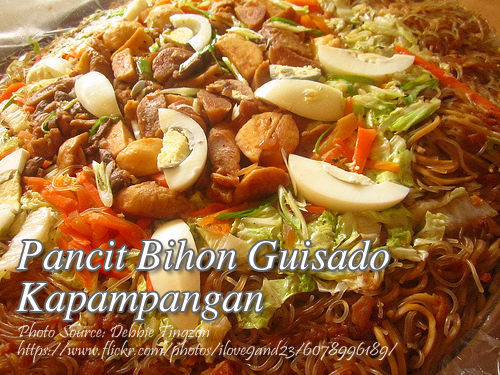

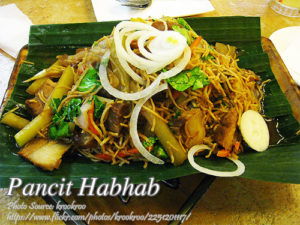
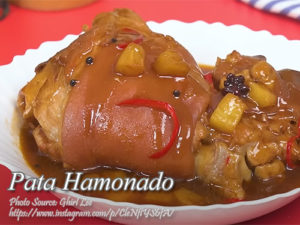
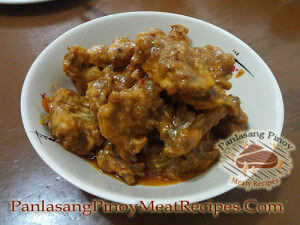
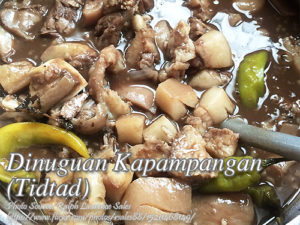
Hi! It doesn’t say anything on atsuete. When do you add it in? Thanks.
Hi Grace, sorry for the typo. I’ve corrected the recipe already. Thanks for your feedback!